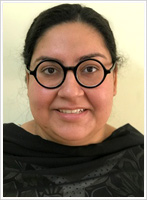 Shirin Amlani
Shirin Amlani
United States America
March 16-29, 2022
My time at the Kalinga Eye Hospital and Research Center has been perspective changing. I came here armed with my online pre-departure training put together by Unite for Sight which taught me about the differences in priorities, the expectations and the best ways for me to be involved. I thought I was well prepared with knowledge to make a meaningful contribution to the work here. However, from my first 20 minutes with the organization, I knew I had no business being here trying to help a very well run and efficient organization.
I have been impressed by the hospitality that has been offered to me, the ingenuity in training and efficiency, and the work ethic of those at KEHRC. I was greeted with a patient and prepared Mr. Sadasiba outside the BBI airport after my baggage was mixed up. As soon as we got to the hospital, I was met by Bini Didi who welcomed me into my room, showed me how to use the faucette in the bathroom (true American!) and helped make sure I had what I liked to eat during my stay. She has been a blessing to get to know and get cared by.
In the States, I am used to the requirement of college degrees or doctoral degrees before we are given hands on training that lays our theoretical knowledge useless. KEHRC has skirted that entire venture and uses paramedics who donít have formal training and degrees but gives them on the job training and a short 2 month course to be able to do testing at the hospital. These ladies are not only able to speed up the process for the optometrists and ophthalmologists but they are capable of treating patients in ways unimaginable in the US. Giving injections in the muscles around the eye and into the intraocular area is something even fully trained emergency medicine physicians wonít do in the US but here, paramedics with 1 year of on the job training are able to do with complete competency. This helps keep the hospital sustainable because the paramedics are more readily available. Additionally, the use of reusable sterile drapes and instruments in the OT significantly reduces the cost of supplies used during surgery and helps the environment. In the US where we would use 1 set of needles per patient, here they are able to clean with acetone between patients and keep going. This promotes the assembly line set up of cataract surgeries and allows a surgeon to complete more than 10 surgeries in an hour. By having everyone work at the very top of their training, more patients can be seen which leads to less disease.
As soon as we hit the end of a shift in the US, we are antsy for hand-off and want to get paid overtime if we have to stay even a minute beyond our scheduled time. Here, I have seen there are no set times for work. It is a much more fluid concept of duty to the hospital and its patients no matter the time of day. If there is something to be done, it will be done before people try to leave without asking for extra compensation. This has been truly a lesson in humility. The workers and doctors at KEHRC have families to take care of, homes to manage and other activities to participate in but they never look at the clock when we are on case # 7 of 12 in the OT and it is already 7pm. Beyond the clinical staff, the hospital administrators too, have no office hours time. They come as early as they can and work till the work is finished irrespective of the time on the clock.
I have learned a lot from my time in this small-district eye hospital about sustainability, patience, hardwork and most of all building relationships. I hope that my time here has been helpful in some regard for the hospital but I know the impact they have made on me is beyond anything I am capable of offering the Center.